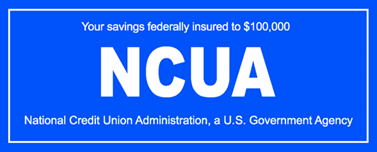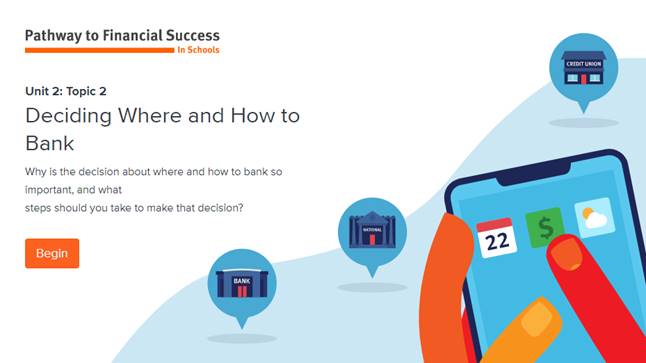Financial Services
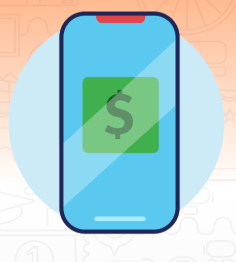
Sponsored by
Discover and Discovery Education
Unit Overview
Using Financial Services
introduces you to the scope of services offered by banks and other financial
institutions. The unit begins with an introduction to financial institutions,
including what they are and how they can help people achieve their financial
goals. Then you explore what to look for when choosing a financial institution
and learn the differences between banks, credit unions, and other financial
service providers. Next, you will learn
about what information is needed to open an account and how to decide what
products they will need.
Section
A - Understanding Financial Institutions
How
can banks and credit unions help you achieve your financial goals?
Saving
is a key principle. People who make a habit of saving regularly, even
saving small amounts, are well on their way to success. Its
important to open a bank or credit union account so it will be
simple and easy for you to save regularly. Then, use your
savings to plan for life events and to be ready for unplanned or emergency
needs.
|
Safety of Financial Institutions |
|
|
Commercial Banking |
Federal Deposit Insurance Corporation Each depositor insured to at least $250,000 per
insured bank |
|
Credit Unions |
National Credit Union Administration Each
depositor savings is federally insured to $100,000 per credit union |
Click here to watch a
BrainPOP video on Banking.
You will need to create a free account. You can still access all the great features BrainPOP offers but now in your account.
Class Code: flour5601
Section B Deciding Where and How to Bank
This module will give you
an overview of factors to consider when choosing where to bank. You will learn
how to compare features and costs of services offered by financial
institutions.
Complete the learning module below and keep
any necessary notes.
Section C Opening New Accounts
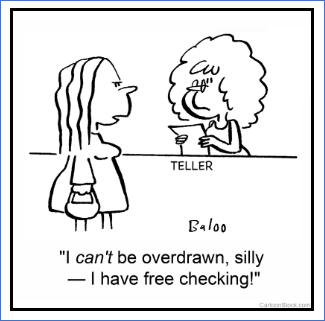
What
financial products will you need? How do you open an account at a financial
institution?
In this section you will
get an overview on the functions of a Student Checking Account and how to Opening
a Checking Account.
Checking Account
A checking account is a
type of bank account that offers easy access to deposited funds. Unlike other
types of bank accounts including savings checking accounts typically allow
unlimited withdrawals and deposits, making them a good choice to cover your
everyday spending.
Student Checking Account
Student checking accounts
function just like standard checking accounts, but they tend to offer lower
account minimums and lower fees. Many banks and credit unions, for example,
offer a monthly maintenance fee waiver or at least a discount on the monthly
fee for student checking accounts. As
with other checking accounts, you may be able to avoid fees if you set up
direct deposit, maintain a minimum daily balance or make a certain number of
debit card purchases each month. Student checking accounts are typically
available to students ages 17-24; you may be required to
provide proof of active enrollment in a qualifying high school, college,
university or vocational program.
Opening a Checking Account
Eligibility requirements
for checking accounts are few. All banks require you to be 18 years of age or
older, though most allow a minor to be a co-owner of a parent or
legal guardian's account. Some banks turn you down if you have criminal
convictions related to fraud or financial crimes or if another bank closed your
account due to mismanagement, such as unpaid overdrafts.
To ensure the process
of opening your checking account goes smoothly and efficiently, bring
the appropriate documents with you to the bank, including photo identification,
your Social Security card, and proof of current address, such as a utility
bill, cable bill, mortgage statement, or signed lease agreement. While not all
banks require every one of these banking documents, it is better to have them
and not need them.
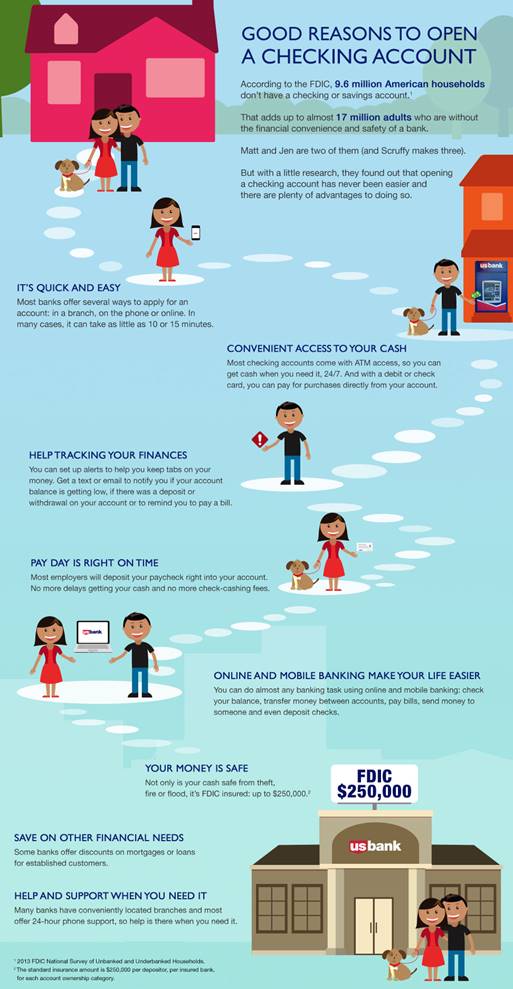
![]()
Beware of Banking Fees
Imagine that you are at an
event that you bought tickets for. You want to buy a souvenir from one of the
vendors but realize that you dont have any cash, which is all they accept. You
go to the ATM and find that it is going to charge you $3 to withdraw money from
your account. Do you accept it? Why or why not?
|
How to Avoid Monthly Checking Account
Fees |
|
Meet
the minimum balance requirements |
|
Enroll
in direct deposit |
|
Open
a savings account at the same institution |
|
Look
for free checking elsewhere |

